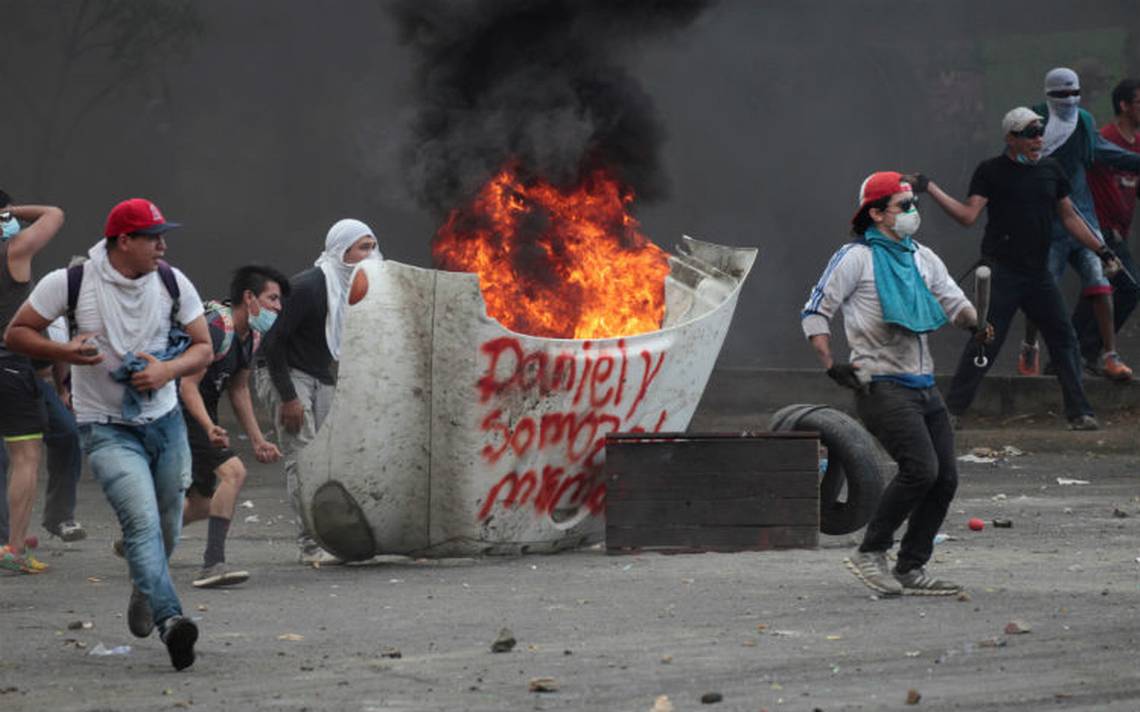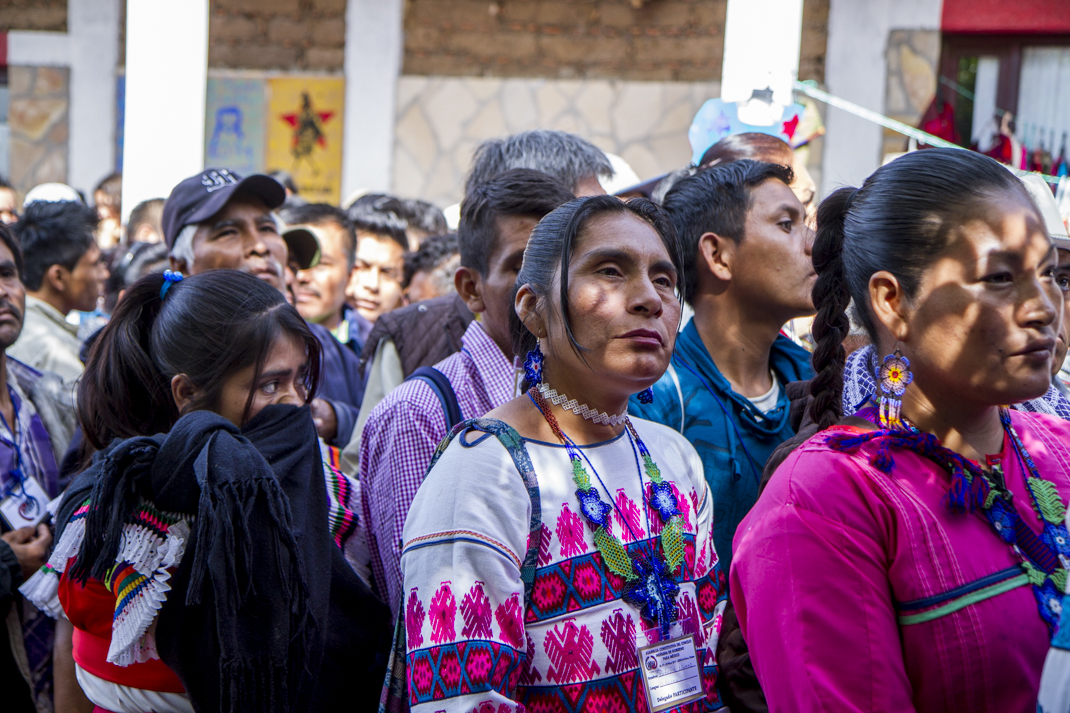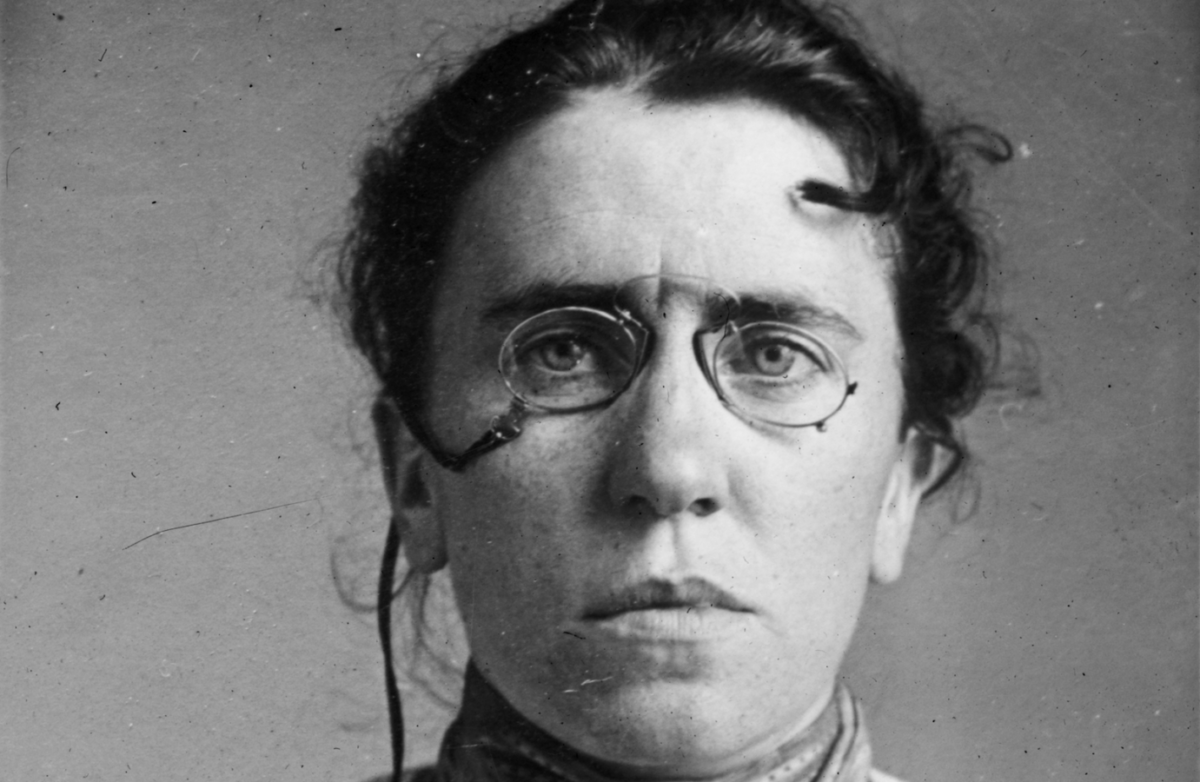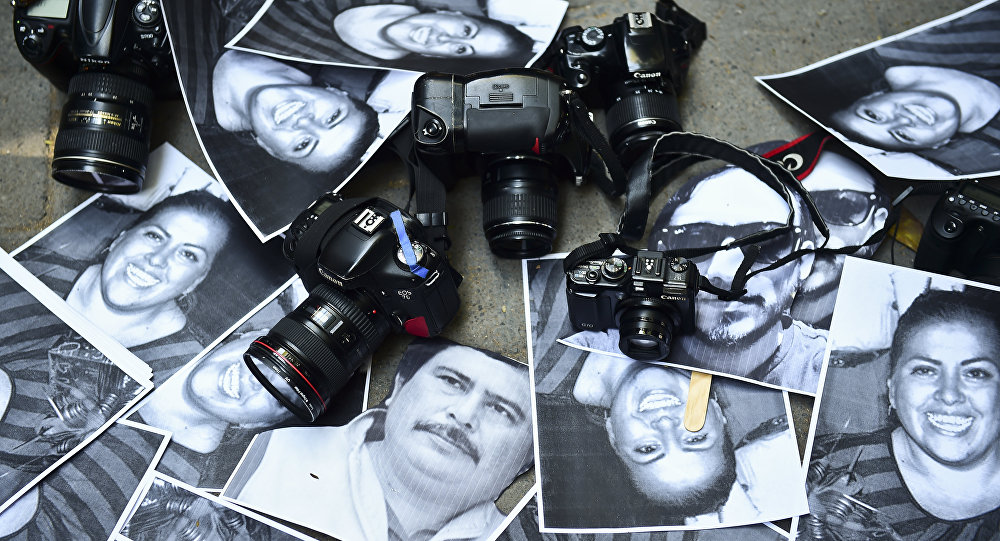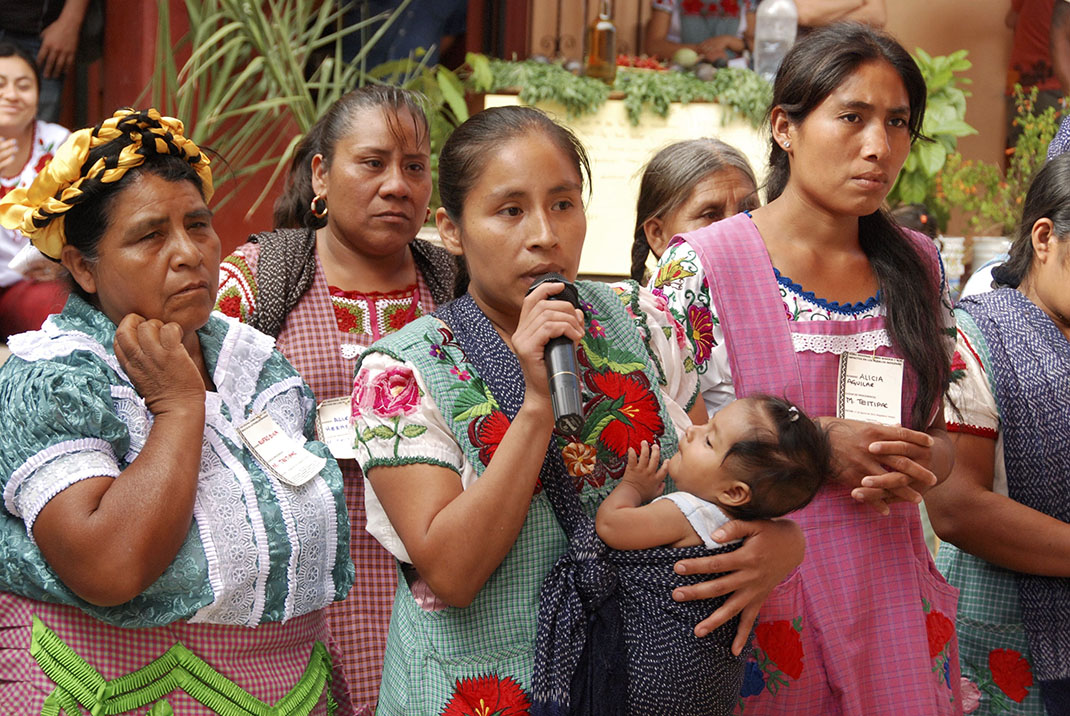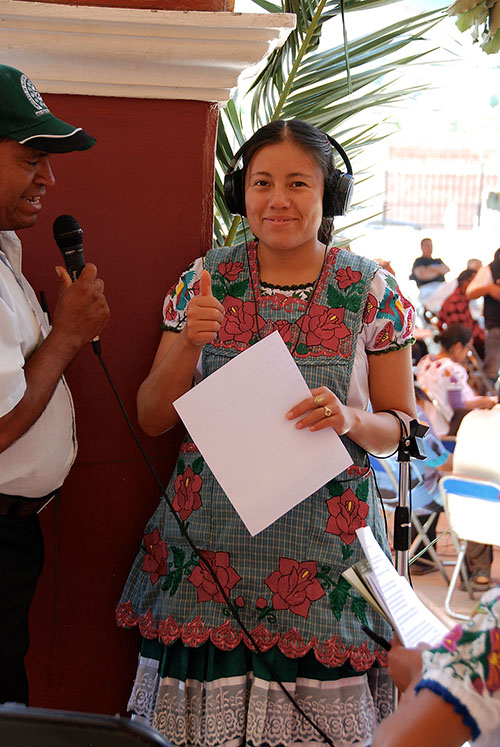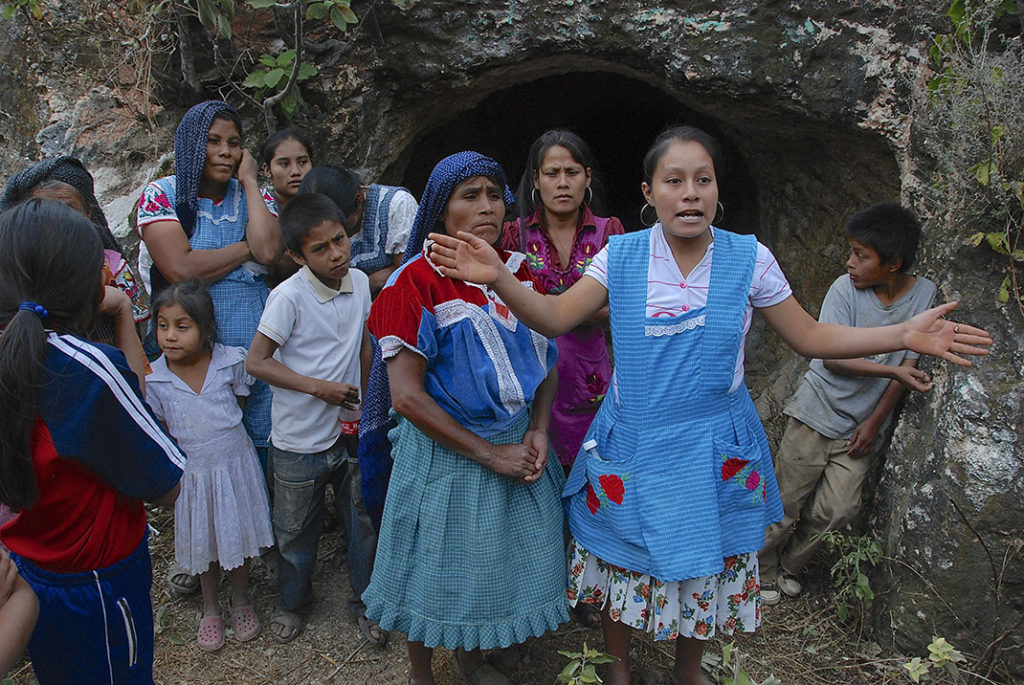Traslate: Laura Krasovitzky
On Thursday, May 31, student and social movements, farmers and civil society organizations in Nicaragua that are part of the Civic Alliance for Justice and Democracy called for greater resistance against the repression carried out by President Daniel Ortega’s administration. “We are calling for an intensification of different forms of peaceful protest: intensify the struggle for university autonomy, strengthen and reorganize barricades, reinforce supply centers and strengthen expressions of solidarity and support", expressed the Alliance in a statement. The Nicaraguan Centre for Human Rights (CENIDH) has confirmed that as of the evening of May 31, the death toll has risen to 108 after 43 days of government repression against protestors.
The Alliance’s call took place a day after an attack on a giant demonstration on Mother's’ Day in Nicaragua on May 30, led by mothers of the victims of the wave of repression in April ("Mothers of April“ movement) in the country. The attack left 88 injured and at least 16 dead in different cities around the country, according to the most updated count on May 31 by the CENIDH.
"The simulation carried out by the government of President Daniel Ortega has reached inconceivable levels of perversion. While in the morning his government signed an agreement with the Inter-American Commission on Human Rights to create an Interdisciplinary Group of Independent Experts, which would investigate grave human rights violations committed so far, later in the day, the government violently attacked a mass march convened by mothers of youth executed within the context of the protests,"
SAID ERIKA GUEVARA ROSAS, DIRECTOR FOR THE AMERICAS AT AMNESTY INTERNATIONAL.
The protests, led mostly by students, began on April 18 in response to government reforms that increased workers’ and employers’ contributions to social security, while cutting benefits.
Within the first five days of protests alone, the Nicaraguan Red Cross provided treatment to more than 400 wounded, 235 of whom had to be transferred to health units, according to Amnesty International’s (AI) report Shoot to kill: Nicaragua's strategy to repress protest, presented on May 29. Moreover, 311 of all cases regarding medical attention took place in Managua, primarily at the Polytechnic University of Nicaragua (UPOLI), making it one of the areas with the highest number of registered attacks against protesters across the country.
Audiovisual materials presented by AI confirmed the use of firearms by police during the first days of the protest in the areas surrounding the UPOLI. The images show a law enforcement group (riot police and National Police) with shotguns and two firearms. The police fired lethal ammunition at least once, despite a lack of perceivable threats against them. This event would have happened at night.
Understanding the context
Nicaragua's political context shies away from traditional left-wing and right-wing politics. For a sector of what is considered to be the institutionalized political left of Latin America, the protests in Nicaragua appear to follow the script of the United States-led coup against Ortega, who currently leads the Sandinista National Liberation Front (FSLN), heir to the Sandinista movement that overthrew the Somoza dynasty in Nicaragua in 1979.
In an interview for TeleSur, for example, international analysts like Sandino Asturias, Adolfo Pastrán and ErnestoWong pointed out that the protests are part of a new interventionist plan put together by the United States, as a reissue of the right-wing script that has been used in Venezuela to trigger a change in government.
However, reality is much more complex. Avispa Midia interviewed Rigo del Calvario López, who was part of the Sandinista guerrilla in the 1970s. Talking about Sandinismo in the times of President Daniel Ortega is a matter of nostalgia and anger for this old ex-guerrilla.
"To be a Sandinista meant learning from the principles of General Augusto César Sandino, who led the resistance against the United States armed occupation in Nicaragua between 1926 and 1933. He did not seek to be a landowner or president. Those of us in the original block of the Sandinista National Liberation Front (FSLN) affirmed that we did not want to be entrepreneurs or millionaires and much less presidents. However, the opposite happened. They became landowners, presidents, businessmen and millionaires. They only use the red and black flag to shelter themselves and that's not being a Sandinista", shares Calvario.
Learn more ⇒ Avanza el neoliberalismo en Nicaragua: del rojinegro de la revolución al fiusha de las modas
Taking all of the above into account, the wave of violence on behalf of the State is unjustifiable and indefensible. Nicaragua has been governed for three consecutive terms since 2007 by President Daniel Ortega. His wife, Rosario Murillo, has been vice-president since January 2017. According to AI’s report, in recent years, the signs of human rights deterioration have been increasingly visible. On the eve of the 2016 presidential elections, Amnesty International expressed concern that Nicaragua was "very quickly and dangerously slipping back into some of the darkest times the country has seen in decades", the document stated.
An Avispa Midia team tried to enter Nicaragua on the eve of the elections, but was denied entry by immigration authorities after realizing it was a team of international journalists.
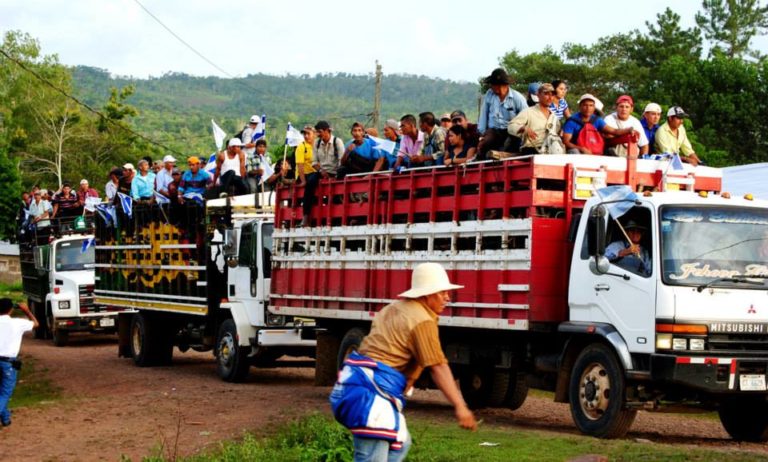
Rights violations regarding freedom of expression and peaceful protests have been repeatedly carried out by President Daniel Ortega’s government, This has been documented by various national and international human rights organizations. The violent crackdown on protests and harassment experienced by representatives and rural community leaders is also due to their resistance to the Interoceanic Grand Canal mega-project, which has also been repeatedly condemned by Nicaraguan organizations and Amnesty International.
AI made a recount of the events in its report. On April 16, 2018, the Board of Directors of the Nicaraguan Social Security Institute (INSS) approved a reform regarding the social security system, which was ratified the following day by President Daniel Ortega through the 2018 Presidential Decree, published in La Gaceta Official on April 18, 2018.
The reform entailed an increase in social security contributions for employers and workers and an additional contribution of 5% for pensioners, among other changes. The affected sectors of the population took these measures as an attack on their rights. The lack of consultation and transparency during negotiations further fueled discontent. As a result, thousands of people protested in Managua and other cities in the country such as Bluefields, León, Estelí, Ciudad Sandino and Masaya.
Acts of repression and violence against protesters, most of whom were students, by state security forces and government related groups or paramilitaries were denounced through social media networks and by human rights organizations as soon as the protests began. On the first day, a parapolice group attacked students at the Central American University (UCA).
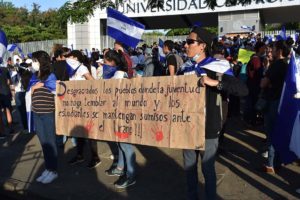
On April 19, 2018, students from various universities joined the protests. The day ended with at least three people killed, including a student and a police officer, and dozens of people injured. The protests spread to other departments across Nicaragua, while the government blocked the transmission of at least four media outlets, as was later reported.
Universities like the Polytechnic University of Nicaragua (UPOLI), the National University of Engineering (UNI) and the Agrarian University (UNA) became shields for hundreds of young people to protect themselves from the violence carried out by public security forces and parapolice groups. On April 21, 2018, reporter Ángel Gahona was murdered in Bluefields and nine other journalists were injured.
The following day, additional attacks were reported and attributed to the National Police, which went after students sheltered in the UPOLI. Six people were injured, as a result, and one person died. That same day, President Daniel Ortega announced he would revoke the reforms to the social security system, but made no mention of the deaths of protesters. The repression has been increasing ever since.
The strategies of repression
Some of the elements AI mentioned as part of this strategy of repression are: an official discourse of denial and covering up of existing repression and its consequences, as well as having the highest levels of government stigmatize people protesting publicly; the use of parapolice groups to carry out attacks, amplify their repressive strength, and operate outside the law more easily; the excessive use of force by the National Police and its riot police unit; possible extrajudicial executions by both the National Police and parapolice groups; possible acts of concealment and obstruction in investigations due to a lack of basic and crucial initial steps to make them successful; the denial of medical care in public hospitals; as well as attempts to control the press in order to conceal reality and limit freedom of expression.
Details for some of these elements according to AI’s report can be explored below.
Denial of State repression
After reports of the first three people killed by state forces surfaced on April 19, 2018, Vice President Rosario Murillo told reporters that the groups of people protesting were "tiny" groups that were "against peace and development, led by interests and a political agenda, selfish, toxic, (and) full of hate, [...] "and had made up the deaths reported that day as an anti-government strategy. She also expressed that these sick hearts, full of hatred, and perverts cannot plant chaos and strip all Nicaraguan families of the tranquility that God has given us".
She also accused the media of being manipulative and "promoters of violence that cowardly and premeditatively hide from the cameras they themselves carry", and warned that the government would not allow any provocations.
On April 21, President Ortega made a public statement regarding the protests for the first time, emphasizing that the protesters were "murderers, who walk with weapons of war and when they fall in combat because of the army or the police, then it’s poor them and one has to go to Human Rights on their behalf. "He also stated that protests were being manipulated by political factions that take advantage of any excuse to take political advantage".
Despite the fact that the number of people murdered within the context of police repression increased every day, neither President Ortega nor Vice President Murillo lamented the deaths of protesters. It was not until April 30, 2018, when the Head of State expressed his solidarity with people who lost a loved one in acts of violence and called for "a minute of silence, remembering the deceased, [ ...] but above all, committing ourselves to prevent violence from returning to our homeland".
Without proof of evidence
Safeguarding and preserving the crime scene correctly is one of the most important aspects to ensure an impartial and effective investigation. International standards indicate that essential steps must be taken to process all evidence that may contribute to the success of the investigation in these types of cases.
However, Amnesty International stated that in most of the documented cases, the crime scene was not preserved (when it was in fact possible) and the evidence was not recollected promptly and exhaustively and lacked a guarantee for the chain of custody.
In at least two cases, families told Amnesty International that the evidence at the scene of the crime had been removed. According to videos analyzed by the organization, the morning after the murders of Orlando Pérez and Franco Valdivia, several people cleaned traces of blood and other evidence with a hose and buckets of water.
In the case of Cristhiam Cadenas, whose body was found inside a burnt building in the city of León, the police did not preserve the evidence (his clothes) and did not guarantee the chain of custody. At the time of the interview with Amnesty International, his brother Alexander Sarria Cadenas explained that the police showed him his brother's pants half burnt on one side and a burnt body that was unidentifiable. Although Alexander Sarria identified the clothes, he was not completely sure if it was his brother since he did not have a DNA test to verify his identity. Moreover, Alexander mentioned the body’s legs, arms and teeth were missing.
Nonetheless, the forensic pathologist told him he had died from smoke inhalation without offering any further explanation.
Censorship
Censorship, attacks and threats to media and journalists by riot police and parapolice groups were repeatedly reported during protests. On April 19, 2018, the Nicaraguan Institute for Telecommunications and Mail (Telecor) issued an order to take Channel 100% Noticias, Channel 12, Channel 23 and Channel 51 off the air. Additionally, the Radio Darío radio station in León was set on fire on April 20.
Nicaragua Dialogue
Conversations currently held between movements and organizations and the Ortega government were suspended by the Catholic Church, which has been acting as a mediator and witness in the process after the massacre on Mother's Day. "At the time, we agreed to a National Dialogue despite the lack of conditions and political will by the government. This time has been wasted in sterile discussions that do not touch upon the pillars of the dialogue: Justice and Democratization", the Alliance declared in its statement.
"We continue to believe that the Nicaragua Dialogue is still a way to find a peaceful solution to the crisis. However, following the most recent events, it will only be possible to proceed with this dialogue if the conditions set forth by the Episcopal Conference of Nicaragua are fulfilled and if we have international independent guarantees present".


